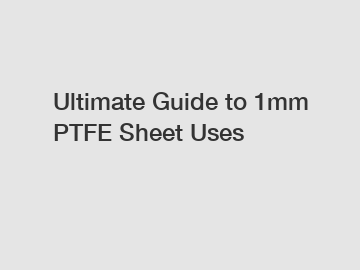Maritime Aids to Navigation
Maritime Aids to Navigation
Maritime Aids to Navigation
Click here to get more.
INTRODUCTION
The sea signaling is a key support for the navigation at sea, rivers or lakes, as it provides the means for navigators to drive on safe ways free of dangers, when driving through entrances, exits, routes and to reach the port without risk of stranding.
As is stipulated in the Ports Law, Navigation Law, and its Concession Title granted by the Federal Government through the Ministry of Communications and Transportation, the Administración Portuaria Integral de Coatzacoalcos, S.A. de C.V. (API) (Coatzacoalcos Port Authority) is responsible for the: Construction, operation and maintenance of the maritime aids to navigation system of the port, according to the standards and technical recommendations issued by the International Association of Lighthouse Authorities (IALA).
The maritime aids to navigation used today in the port of Coatzacoalcos, are considered adequate, according to the characteristics and operations, which are conducted during day and night, being bright and visible signs consisting essentially of the lighthouse, beacons and buoys.
The Port Authority is responsible for the construction, operation and maintenance of the maritime aids system of the port.
CURRENT MARITIME AIDS
In the whole world the maritime aids system, within the system of the IALA, is divided into two major regions called "A" and "B". Mexico is included in "B".
Following the conventional position of maritime aids, according to the ships coming from the sea entering the port, the signals in region "B", during day and night use red colored structures and lights on signs on the starboard side and green colored ones on the larboard side.
The visible signs that are installed at the port are:
Lighthouse: A structure located on the highest part of an area, which serves as a reference to indicate a Harbor, an island, a point of land going into the sea or a danger to the navigator, also according to its flashes it serves the navigator to know his location.
Beacons: These are smaller structures than the lighthouse and they are used to facilitate navigation in relatively short distances; in the Port there are two types of beacons: the first ones point out the entry into the Port and the second ones indicate the course lines to be followed by ships, when entering or leaving the port or the basins.
Buoys: They are floating subjects connected to a block of reinforced concrete by means of a chain, anchored in such a way that their position cannot be changed neither by the currents of the river nor by the movement of waves and they identify the lateral limits of the navigation channel.
CARACTERISTICS
An essential requirement of a modern port is a clear signaling and a consistent organization of the canals and basins, where the ships that arrive to the port enter, exit and make their internal navigation.
One characteristic of any type of signal is its geographic reach, meaning the distance from which it can be seen during the day and this depends on the height of the upper limit of the signal above the water level varying according to the height of the observer at the same level.
Another of the most important characteristics is the light range of the signal light, meaning the distance between the light source and the most distant point, from which the light can be seen by the normal human eye, this reach depends on the effective power of the light transmission, the brightness of the light source and at its height above water level.
As Coatzacoalcos is a port that operates 24 hours a day, the signaling used is modern and appropriate, with bright and visible signs that meet international standards, their characteristics are as follows:
LUCIO GALLARDO y PAVÓN LIGHTHOUSE
Named in honor of Lt. Lucio Gallardo y Pavón, who died in the sinking of the ship B/T Potrero del Llano, because of a German submarine on May 13, together with 13 men of his crew.
The lighthouse is located on the hill Gavilán de Allende and was built in the year and inaugurated in the same year, in order to commemorate for the first time the National Day of the Navy, a historical day which gives honors to those sailors, who were victims of the war fulfilling their duty.
General Characteristics: An octagonal concrete structure, painted in white with a height of 23 meters above the floor and 54 meters above the mean sea surface level.
A) POSITION INDICATING BEACON
Western Beacon: Cylindrical structure of reinforced concrete located on the tip of the eastern breakwater, height of lantern 21 meters above the mean sea surface level, painted in orange and white.
Optics: Lantern brand TIDELAND model ML-300 MAXLUMINA with a 300 mm lens. Red hat, photovoltaic circuit with changing lamps and flashing lights brand TIDELAND TF-3B MICROPOWER OMNIBUS, halogen bulbs 55, solar charger (two), photovoltaic module based on mono-crystalline silicon cells pseudo square of 108X36 cm, accumulator (two) 12-volt. 27 plates.
Eastern Beacon: Cylindrical structure of reinforced concrete located on the tip of the eastern breakwater, height of lantern 21 meters above the mean sea surface level, painted in orange and white.
Optics: Lantern brand TIDELAND model ML-300 MAXLUMINA with a 300 mm lens. Red hat, photovoltaic circuit with changing lamps and flashing lights brand TIDELAND TF-3B MICROPOWER OMNIBUS, halogen bulbs 55, solar charger (two), photovoltaic module based on mono-crystalline silicon cells.
B) MARK BUOYS
Metal Structure made of ¼ 'd3 Carbon Steel, diameter: 2 meters, height: 1,70 meters, angle conning tower of 1 ¼' d3 x 1 ¼ 'd3 x 5/16 iron, 2 meters high, anchored with reinforced concrete block of 5 tons, fixed with a 1' chain with concrete swivel joints and joint shackles.
Optics: Lantern brand TIDELAND Model ML-155 MAXLUMINA with 155mmm lens, red hat starboard, green on the larboard side, flashing lights and changing lamps type TF-3B MICROPOWER OMNIBUS, bulbs 1.15 amp 12 volts., 40-watt solar charger, based on mono-crystalline silicon cells, accumulator (two) 12-volt. 27 plates.
C) BIFURCATION BUOY
Metal structure made of Carbon Steel, diameter 2.40 meters, height 1.70 meters, angle conning tower 3' x 3' x 3/16' iron, 3 meters high, anchored with reinforced concrete block of 6 tons, fixed with a ¾'d3, 9m long chain with concrete swivel joints and joint shackles.
Optics: Lantern brand TIDELAND model ML-300 MAXLUMINA with a 300 mm lens, amber colored hat, photovoltaic circuit with changing lamps and flashing lights brand TIDELAND TF-3B MICROPOWER OMNIBUS, halogen bulbs 55, solar charger (two) based on mono-crystalline silicon cells, pseudo square of 108X36 cm, two 12 Volt of 27 plates.
GEOGRAPHICAL SITUATION
In the downloadable document you can observe the geographical location of the buoys and beacons, the unit number, national number, brightness, color, height and the light and geographical reach.
MAINTENANCE
Due to the importance of maritime aids for the navigation and given the conditions of the port and the traffic of vessels that are registered, it is necessary to maintain the installed maritime aids in optimal conditions, requiring programs for adequate and timely preventive and corrective maintenance; this is because of the aggressive means in which they are installed.
a) The preventive maintenance carried out, is performed annually, taking advantage of the fact, that the buoys have to be removed due to the maintenance dredging of the navigation channel and the maneuvering basins, and consists of: Review and, if necessary, replacing the fixing chain between the anchoring block and the buoy, review and if necessary replacing swivel joints and joint shackles, cleaning, repair, rehabilitation and protective painting of the buoy and the conning tower.
b) The corrective maintenance is performed, when some component of the signal is damaged by an incident or accident, performing its repair or replacement if necessary.
OPERATION
The operation of maritime signaling means to maintain the signals in optimum conditions, verifying that each of them is operating well and is in its position in accordance with the established standards and locations.
The procedure is dynamic as it is a support for the internal navigation of the vessels operating in the port and is performed as follows:
When the vessel crew that is transiting or conducting operations at the waterways observe that a signal is not working, that it is damaged or misplaced, they report it to the marine control tower via radio, which in turn notifies the Harbor Master and API in the same way, which in order to avoid risks, is going to correct the anomaly. If, because of a severe damage or necessary repair, the signal may be out of service for more than one day, the Department of Maritime Signals of the Harbor Master reports this by radio to the Undersecretary of Maritime Signals of the Directorate-General of Ports and Merchant Navy, so the sailors can be warned and take the appropriate precautions.
What are 3 natural rubber advantages?
Which is the best nylon 6 sheet for cost-effective purchases in B2B marketing?
Tips for finding the best deals on plastic road plates?
What are the advantages of FKM?
What is HDPE pipe prices?
What is HDPE pipe prices?
The Ultimate Guide to Teflon Joint Sealing
If you are looking for more details, kindly visit HUAZHONG.
Aids to navigation (AtoN) system
Reliable and easy monitoring with our digital control panel
To avoid you having to make unnecessary visits to your assets or having to carry out needless maintenance, our aids to navigation products can be controlled and monitored completely remotely by our state-of-the-art digital control panel. The control panel features a touchscreen display showing all connected alarms and notifications, ensuring that all necessary communication can take place between all obstruction lights in the system, even on offshore assets that are sparsely manned or unmanned. The control panel is cost-effective and explosion proof, and the innovative design and configuration make the system user-friendly and intuitive for all users. The modularity of the system means your Orga Helideck and Obstruction Lighting Solutions can also be accommodated.
Your safety is our concern
Your guarantee that our Aids to navigation products are more than up to the job is a track record stretching back 40 years, resulting in navigation aids that now underline the safety of offshore assets all over the world. Orga is widely acknowledged to be the industry's number one supplier of marine navigation aids.
Moreover, you don't need to keep up with compliance regulations; we'll do that for you. Our aids to navigation system is specifically designed to help you meet or exceed all IALA and local-authority operational and safety requirements for aids to navigation on offshore installations. It is also certified for use in all waters, worldwide. Orga will help you stay ahead.
Are you interested in learning more about marine navigational aids company? Contact us today to secure an expert consultation!
Contact usWhich custom gaskets near me offer the best price for B2B purchase?
Unveiling the Affordable 8 Inch HDPE Pipe Price
Pioneering the Future: 5mm PTFE Sheets – Which Industries Could Benefit the Most?
Ultimate Low-Priced Polyethylene Guide: Beat Wear and Tear!
What is best to put under stall mats?
What are the different types of rubber bellows?
Ultimate Guide: Unveiling 2 Inch HDPE Pipe Prices - Discover the Best Deals!










